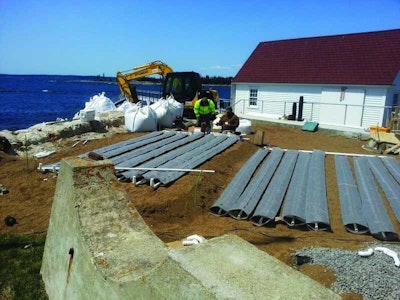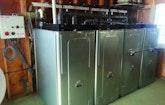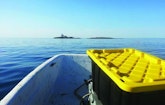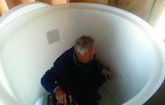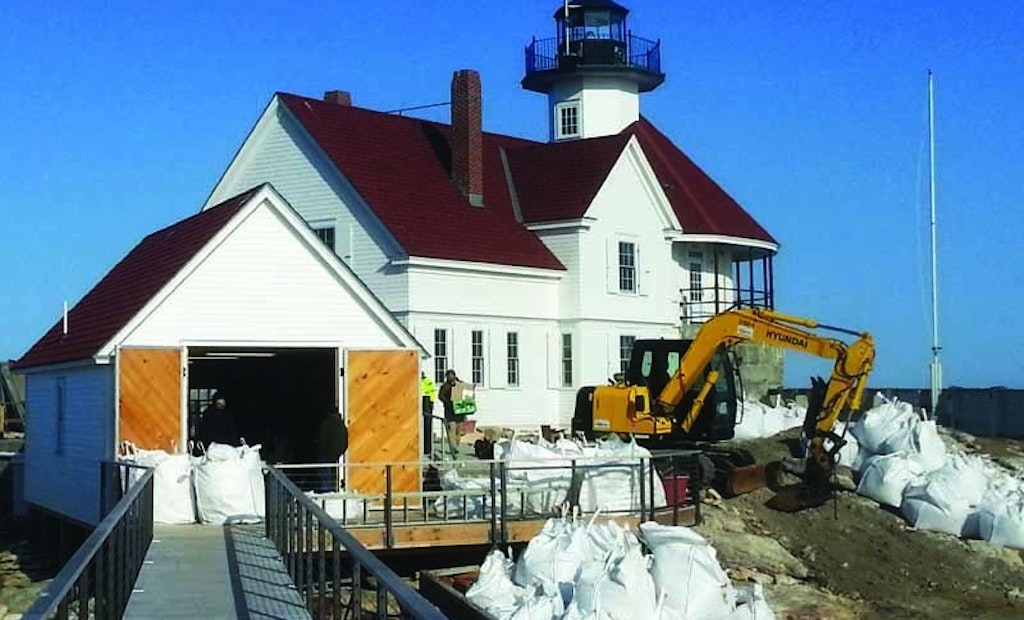
Interested in Drainfield Media?
Get Drainfield Media articles, news and videos right in your inbox! Sign up now.
Drainfield Media + Get AlertsA single entry on the permit form summed up the challenge of the project — Type replaced: Overboard discharge. Year installed: 1892.
Things have changed between 1892 and now. Modern codes would not allow a pipe to dump untreated wastewater into the Atlantic Ocean for a new bed-and-breakfast operation built in a renovated lighthouse along the coast of Maine. Yet a creative group of wastewater professionals developed a solution that enabled the business to proceed while containing and treating all the wastewater on what is little more than a rock table sticking out of the ocean.
Reusing history
The lighthouse was built on the Cuckolds Islands, about 1/2 mile offshore from Boothbay Harbor, which is itself about 30 miles up the coast from Maine’s largest city, Portland. A fog station has been here since 1892, and the lighthouse since 1907. Both warned ships away from a pair of rock ledges that would rip open hulls. In 2006 ownership of the lighthouse was transferred to the private group Cuckolds Fog Signal & Light Station Council, which began restoration.
When the plan for a bed-and-breakfast came up, wastewater disposal was a major question. Because the island is bedrock with a thin covering of soil in some places, there was not enough treatment capacity for the planned use. The first proposed solution was to pump wastewater through a 1.5-mile pipe on the ocean bed and up the coast of the mainland. There it would come ashore, go beneath a small freshwater pond and an asphalt road, and end on a parcel of land where it would be treated. This proposal ran into opposition from the U.S. Army Corps of Engineers and state regulators who were concerned about the potential for underwater leaks and other harm to the environment.
A total onsite solution
Engineers from the Knickerbocker Group assembled a team that included environmental consultant and system designer Albert Frick of Albert Frick Associates, David Potts of Geomatrix Systems LLC, and Ingo Schaefer of BUSSE GT.
The BUSSE system uses aerobic digestion paired with microfiltration membranes to treat wastewater to rainwater quality, meaning less than 5 mg/L of BOD and TSS, and less than one fecal coliform. Then the SoilAir and Geomatrix system takes over. It pumps wastewater and air to the distribution field where Geomatrix GeoMat fabric helps disperse the water. Thus the system tackles treatment with aerobic digestion in two ways, Frick says. One is in the membrane bioreactor, and the other is at the soil-water interface.
From the lighthouse building where the bed-and-breakfast is, wastewater flows by gravity through a 4-inch pipe to an older plastic septic tank repurposed as a settling and pump tank. A 1/2 hp solids pump pushes wastewater through a 2-inch line to a four-tank BUSSE model 500 housed in what was once a boathouse. The first of the four tanks is for settling. Then there is an aerated mixing tank, and finally two aerated tanks equipped with membrane filtration.
From the BUSSE tanks, effluent moves through 1/2-inch tubes to a 275-gallon plastic tank holding a pair of Goulds 1/3 hp pumps. These alternately send effluent through about 50 feet of 2-inch Schedule 40 pipe to the manifold. A pair of SoilAir blowers push air through the pipes and into the soil. This also blows particulate matter and water out of the orifices to prevent the accumulation of slime and to minimize the need to brush or jet laterals. A custom Geomatrix control panel runs the system. It is time-dosed unless the flow is heavy, in which case a float shifts the system to pump on demand.
The absorption field consists of 470 feet of 1-inch pressure pipe divided into three zones to match the contours of the bedrock. Lateral lengths range from 9 to 21 feet, and laterals were spaced 16 inches on center. Orifices are 5/32-inch diameter, drilled 3 feet on center, and covered with GeoMat orifice shields equipped with a pin to keep the shields aligned over the orifices. Laterals are covered with GeoMat fabric. It attracts water (hydrophilic) to create a more even distribution across the absorption field. The field is set on 3 inches of pea gravel spread on the bedrock and topped with 12 inches of gravelly coarse sand. On top of that is another 4 inches of gravelly coarse sand, and 4 inches of loam on top of that provides a base for a lawn.
When the system is winterized, another part of the system comes into play. All remaining effluent is pumped to the absorption field. Residual solids, maybe 25 to 75 gallons per year, are moved from the BUSSE tanks to a 125-gallon Infiltrator chamber. A third SoilAir blower supplies oxygen to this chamber so the solids decompose just like a compost pile. This eliminates the need to bring a pump truck out to the island or arrange the logistics of moving solids to the mainland.
Challenges
This system presented several major challenges.
First was working on an island. Even though it is only about 1/2 mile offshore, at times the wind, waves and tide made it hard to off-load equipment and supplies. On the final day of work for Potts, environmental scientist and president of Geomatrix and SoilAir Systems, the weather shifted and prevented him and engineer Dan Borkowski from reaching the island. Because of the logistical difficulties, they took a large inventory of specialty parts, including items they didn’t think they would need. Common items were sourced from local stores because the nearest supply house was a 90-minute round trip.
Equipment and people were moved to and from the island with a combination of private boats and a contracted barge.
Soil to backfill the installation site was brought out in bags. The advanced treatment also helped keep this cost down because it did not require a large absorption field. “The cost of backfill on the mainland might be $15 per cubic yard, but when you barge it out and handle it in bags, and drop it off at the dock, and spread it around, the cost of the fill may approach $50 to $100 a yard in labor and logistics,” Frick says.
When they headed for the island, they didn’t know exactly what they would find. On shore you know the contour of the land. That wasn’t the case on Cuckolds Islands, Frick says. “They basically stripped all the soil — which is a glacial till sandy loam — saw where the bedrock was, and then chipped away at some of the peaks to get the best fit.” The bedrock is a metamorphic rock, like a schist, and the chipping was done with a hydraulic hammer attached to a mini-excavator.
Normally he and his staff only consult on systems, Potts says. But in this case, with the topography unknown, it made sense to design and build at the same time. When the soil came off, workers found a deep pocket in the bedrock that no one knew about. This became the site for the absorption field because it provided the greatest depth of soil for tertiary treatment and absorption. As a result, the absorption field changed. The shape remained roughly the same, but Potts and Borkowski decided to break it into three zones so each could be at a different height and conform closely to the contours of the rock.
Natural water flow
When the system is done treating wastewater, it will flow through the soil and into the ocean as it does naturally when the shallow soils of the island become saturated, Frick says. Quite a bit will be taken up by the soil and the grass in the ceremonial lawn atop the absorption field.
The use of technology may be advanced, but this is not an uncommon project along the coast of Maine where the use of GPS navigation technology has made lighthouses almost obsolete, Frick says. New construction would not be allowed because of modern standards, but Maine grandfathered these sites and requires owners to use the best treatment they can while giving regulators latitude to determine what is acceptable. In the case of Cuckolds Islands, the high quality of effluent coming out of the system convinced regulators to reduce the setback from the ocean, Frick says.
“When you look at this project, what we essentially did was put a wastewater system on top of a boulder sitting in the water. We are now at a point with technology where you can have both development and sustainability,” Frick says.
